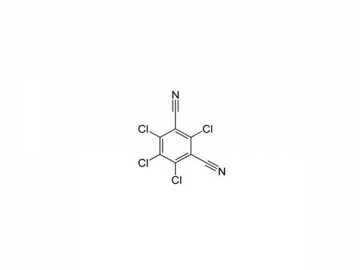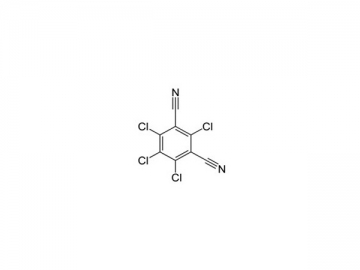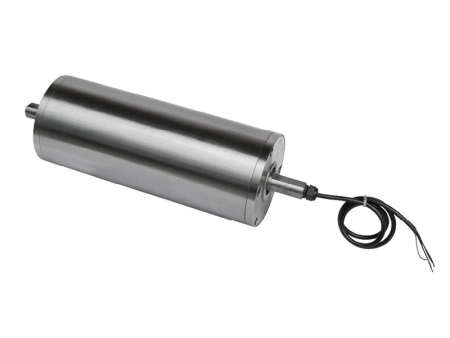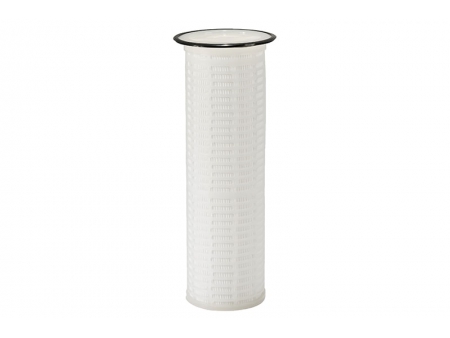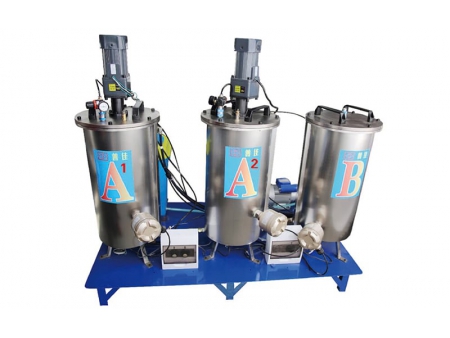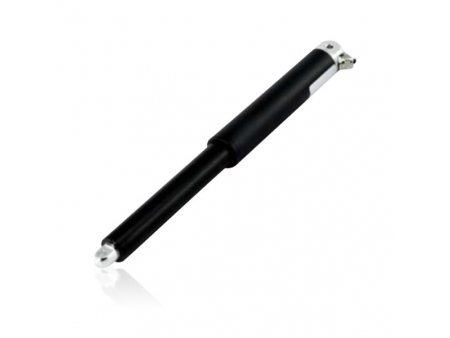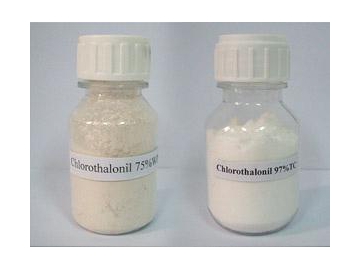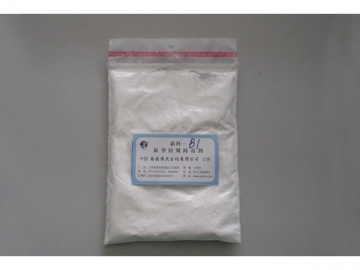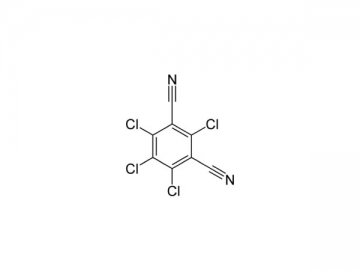Chlorothalonil
CAS NO.: 1897-45-6
Chlorothalonil, also called 2,4,5,6-tetrachloroisophthalonitrile, is a polychlorinated aromatic mainly used as a broad spectrum, non-systemic fungicide. Also, it functions as a wood protectant, pesticide, or acaricide. The substance is able to control mold, mildew, bacteria, and algae.
Function
It reduces fungal intracellular glutathione molecules to alternate forms which cannot participate in essential enzymatic reactions, ultimately leading to cell death, similar to the mechanism of trichloromethyl sulfenyl.
| Crop | Pests | Rate of Use | Application |
| Tomato | Early blight | 1650-3000 g/ha. | Spray |
| Cucumber | Downy mildew | 1650-3000 g/ha. | |
| Peanut | Leaf spot | 1249.5-1500 g/ha. |
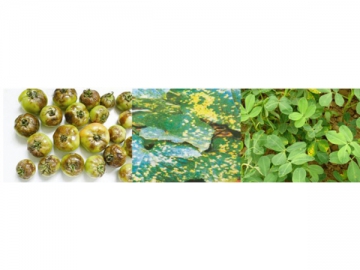
Benefits
In the US, chlorothalonil is used predominantly on peanuts (about 34% of usage), potatoes (about 12%), and tomatoes (about 7%), though the EPA recognizes its use on many other crops.
It is also used on golf courses and lawns (about 10%) and as a preservative additive in some paints (about 13%), resins, emulsions, and coatings.
Note
1. Long-term exposure to the substance results in kidney damage and tumors in animal tests.
2. This product is highly toxic to fish and aquatic invertebrates.
3. Common chlorothalonil synthesis procedures frequently result in contamination of it with small amounts of hexachlorobenzene (HCB), which is toxic.

